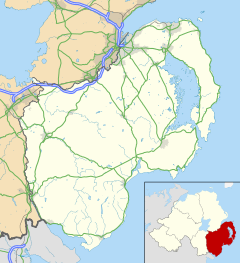
Downpatrick is a town in County Down, Northern Ireland. It is on the Lecale peninsula, about 21 mi (34 km) south of Belfast. In the Middle Ages, it was the capital of the Dál Fiatach, the main ruling dynasty of Ulaid. Its cathedral is said to be the burial place of Saint Patrick. Today, it is the county town of Down and the joint headquarters of Newry, Mourne and Down District Council. Downpatrick had a population of 11,545 according to the 2021 Census.

Draperstown is a village in the Sperrin Mountains in County Londonderry, Northern Ireland. It is situated in the civil parish of Ballinascreen and is part of Mid-Ulster district. It is also part of the Church of Ireland parish of Ballynascreen and the Catholic parish of Ballinascreen, and within the former barony of Loughinsholin.

Down District Council was a Local Council in County Down in Northern Ireland. It merged with Newry and Mourne District Council in April 2015 under local government reorganisation in Northern Ireland to become Newry, Mourne and Down District Council.
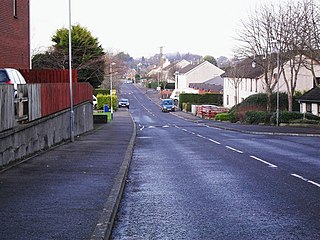
Carryduff is a small town and townland in County Down, Northern Ireland, about 10 kilometres (6.2 mi) south of Belfast city centre. It had a population of 7,173 people in the 2021 census. Most of the settlement lies within the townland of Carryduff, although part of it extends into the neighbouring townlands of Killynure and Mealough.

Ballynahinch is a town in County Down, Northern Ireland. It had a population of 6,164 people in the 2021 Census.

Crossgar is a village and townland in County Down, Northern Ireland. It is about 15 miles (24 km) south of Belfast – between Saintfield and Downpatrick. Crossgar had a population 1,997 people in the 2021 UK Census.
Killynure is a townland in County Down, Northern Ireland, lying on the south-east border of Carryduff.

Kinallen is a small village and townland in County Down, Northern Ireland. It is four miles from Dromore and two miles from Dromara.
Loughinisland is a small village and civil parish in County Down, Northern Ireland. It is between Downpatrick and Ballynahinch, about 21 miles south of Belfast.

Rasharkin is a small village, townland and civil parish in County Antrim, Northern Ireland. It is 13 kilometres (8.1 mi) south of Ballymoney, near Dunloy and Kilrea. It had a population of 1,114 people in the 2011 Census.

Ballygowan is a village in County Down, Northern Ireland. It is within the Ards and North Down Borough. The town of Comber is a short distance to the north-east, the town of Saintfield to the south, and the city of Belfast further to the north-west. It is within the civil parishes of Killinchy and Comber and is split between the historic baronies of Castlereagh Lower and Castlereagh Upper. It had a population of 3,138 people in the 2021 Census.

Annahilt / Anahilt is a village and civil parish in north County Down, Northern Ireland. It is 7.5 miles south of Lisburn, and about 14 miles south-west of Belfast, on the main road between Ballynahinch and Hillsborough. In the 2001 Census the village had a population of 1,148. Annahilt has a distinctive drumlin setting, with a small wooded estate on a ridge to the west, and panoramic views on the approaches to the village.

Stewartstown is a village in Northern Ireland, close to the western shore of Lough Neagh, about 5 miles (8 km) from Cookstown, 3 miles (5 km) from Coalisland and 7 miles (11 km) from Dungannon. Established by Scottish Planters early in the 17th century, its population peaked before the Great Famine of the 1840s at over 1000. In the 2011 Census the town had a population of 650 people. Formerly in the historic County Tyrone, today it is in local-government district of Mid Ulster.

Elizabeth "Betsy" Gray, is a folkloric figure in the annals of 1798 Rebellion in Ireland. Ballads, poems and popular histories celebrate her presence in the ranks of the United Irishmen, and her death, on 12 June 1798 at the Battle of Ballynahinch. Contemporary records are unable to confirm the tale that has been told in all its detail, but they do point to the role of women in supporting the insurrection, including as combatants in the field. Contesting ownership of her memory, in 1898 local unionists disrupted Irish nationalist centenary commemorations and destroyed her grave marker.

The battle of Ballynahinch was a military engagement of the Irish Rebellion of 1798 between a force of roughly 4,000 United Irishmen rebels led by Henry Munro and approximately 2,000 government troops under the command of George Nugent. After rebel forces had occupied Newtownards on 9 June, they gathered the next day in the surrounding countryside and elected Munro as their leader, who occupied Ballyhinch on 11 June. Nugent led a column of government troops in 12 June which recaptured the town and bombarded rebel positions. On the next day, the rebels attacked Ballyhinch, but were driven back and defeated.

The Battle of Saintfield was a short but bloody clash in County Down, Northern Ireland. The battle was the first major conflict of the Irish Rebellion of 1798 in Down. The battle took place on Saturday, 9 June 1798.
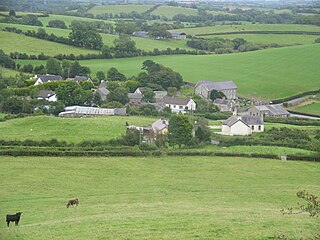
Listooder is a hamlet and townland situated outside Crossgar towards both Ballynahinch and Saintfield in County Down, Northern Ireland. Listooder derives its name from the Irish word Lios an tSúdaire meaning "fort of the leather tanner" or "ring-fort". From the mid 19th century, the hamlet was known as the Cock, while the townland which centres around the fort was called Listooder.
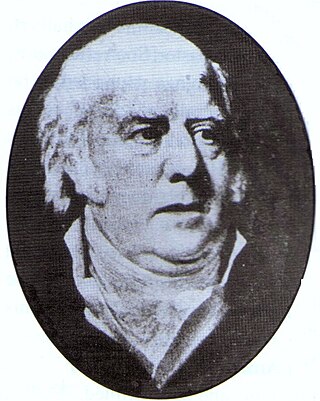
William Steel Dickson (1744–1824) was an Irish Presbyterian minister and member of the Society of the United Irishmen, committed to the cause of Catholic Emancipation, democratic reform, and national independence. He was arrested on the eve of the United Irish rising in his native County Down in June 1798, and not released until January 1802.
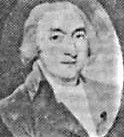
Thomas Ledlie Birch (1754–1828) was a Presbyterian minister and radical democrat in the Kingdom of Ireland. Forced into American exile following the suppression of the 1798 rebellion, he wrote A Letter from An Irish Emigrant (1799).

Magherascouse is a rural townland near Ballygowan in County Down, Northern Ireland. It has an area of 1286.45 acres (5.206 km2). It is situated in the civil parish of Comber, the Poor Law Union of Newtownards and the historic barony of Castlereagh Lower, 2 miles (3.2 km) south of the town of Comber. It lies within the Electoral Division of Ballygowan which is part of the Ards and North Down Borough Council.

